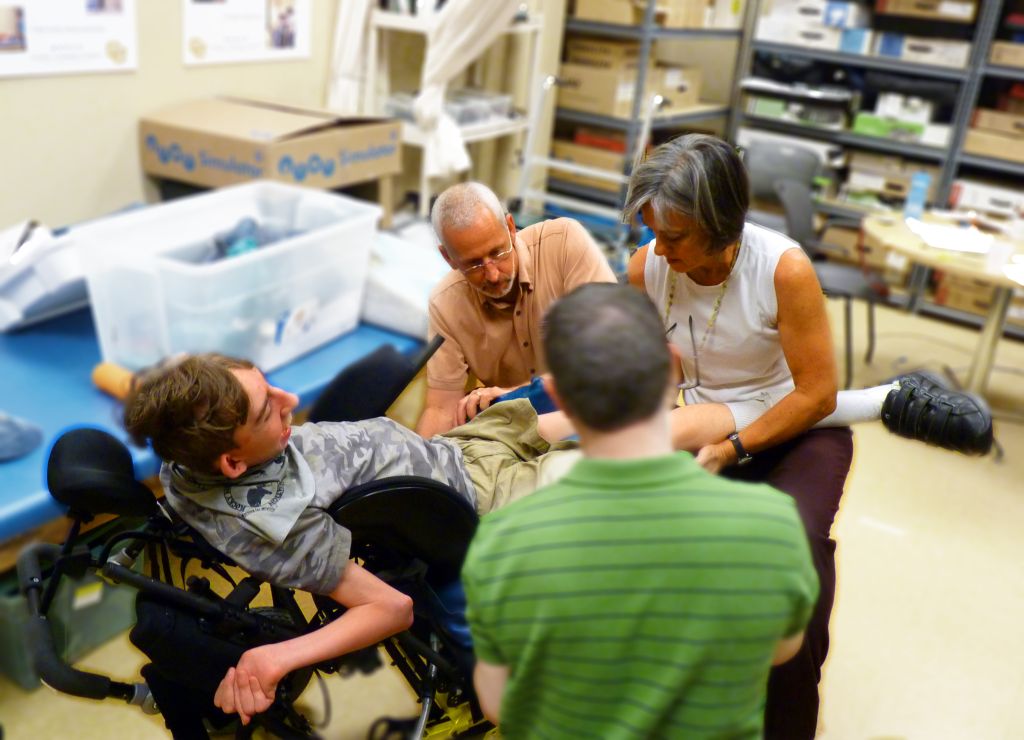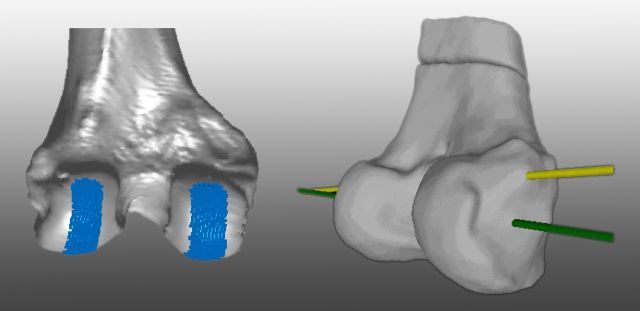Research Projects
The general focus areas of our research are musculoskeletal biomechanics and neruomuscular biomechanics.
Some of the questions we are seeking to answer through our research include:
- Can rehabilitation be improved through the use of robotics?
- Can computational models be efficiently tailored to individuals?
- How can technology be applied to improve surgical procedures and outcomes?
- How can we improve the health and function of wheelchair-bound individuals?
- How can we reduce the risks of developing co-morbidities in at-risk populations?
- What are the best strategies for enabling an amputee to precisely control a passive and/or active prosthesis?
- Can we develop accurate computer models to improve medical device design and integration?
General Biomechanics
- Normal and pathological biomechanics
- Experimental analysis of human movement
- Musculoskeletal modeling and simulation for activities of daily living
- Experimental biomechanical testing (both in vivo and in-vitro)
- Analysis of neuromuscular control
- Computer simulation of whole body motion
Rehabilitation Engineering

- Prosthetic design
- Rehabilitation robotics
- Wheelchair seating biomechanics
- Wheelchair drive control
- Velocity Estimation Algorithms in Haptic Interfaces
- Evaluation of Kinect Accuracy for Rehabilitation Interfaces
- Musculoskeletal simulation guided therapy for children with cerebral palsy – Collaboration with the University of Nebraska Medical Center
- Neuromuscular control of dynamic balance in people with Parkinson’s disease (PD) – Collaboration with the Colorado Neurological Institute
- Mechanisms for low back pain development in people with amputations – Collaboration with Denver VA, Hanger Clinic (prosthetics and orthotics company), Bulow Orthotic and Prosthetic Solutions
- Assessing balance control during walking with powered prostheses – Supported by current R03 from National Institute of Child Health and Human Development – Collaboration with Brooke Army Medical Center in San Antonio, TX
- Evaluating the functional muscle units in Van Ness Rotationplasties – Current Children’s Hospital Colorado – Colorado School of
- Mines Collaboration Pilot Award: Mines developing autograft models for Children’s Hospital
Orthopaedic Biomechanics
- Computational Wear Simulation of a TDR
- Development of a Probabilistic Finite Element Model of the Lumbar Spine
- Facet Force Relative to Disc Degeneration and Disc Replacement
- Development of an Efficient Deterministic Lumbar Spine Model
- CAS vs. Manual Alignment in THA: A Probabilistic Study of Range of Motion
- Design of a Novel Lumbar Spine Testing Device
- Predicting Backside and Post Wear in Mobile-Bearing PS Total Knees
- Implant design
- Computer assisted surgery
- Computer simulation of orthopaedic devices


Medical Device Design
- Gaze-Based Human-Machine Interaction
- Automated Robotic Laparoscopy
- Intention-Aware Robotics
- Haptics in Laparoscopic Surgery
Examples of Past Research Projects
Development of a Self-Powered Telemetric Knee
The telemetric knee is being developed with the intent of measuring patellofemoral and tibiofemoral forces in vivo. The device is implanted in place of the patella during a TKA, and measures the magnitude and location of the patellofemoral force. Data is transmitted from the knee to an electronic receiver located a few feet from the subject. The data is then applied to a kinematic model of the knee and the tibiofemoral forces are resolved. Current progress includes a completed force transducer and implant design. Working prototypes of the transmitter and onboard power generator have been completed and are being scaled down to fit the implant. Development of a transmitter/receiver/data processing system is in progress. This technology introduces a new approach to self-powering prostheses and will provide application of micro-sensor technology for in-vivo measurements of joint forces and motion.

The Development of an Insole for Diabetic Patients with the Loss of Protective Sensation
The goal of this research is to develop an ambulatory device that will enable diabetic patients to continue their activities of daily living and inform the user of any risk of ulceration. This goal is not unique to the research, but the approach is novel. Many studies have found a correlation between plantar pressure and areas of ulceration. The most common sites of ulcers on the diabetic patient’s foot are located where highest plantar pressure is manifested. Another indicator of ulceration is temperature. Temperature has been shown in research to be a successful indicator of the formation of plantar ulcers. Plantar temperatures remain a much less explored variable of interest for use as a diagnostic tool.

